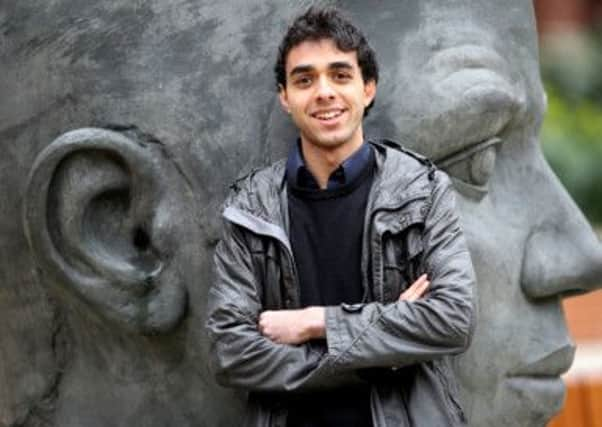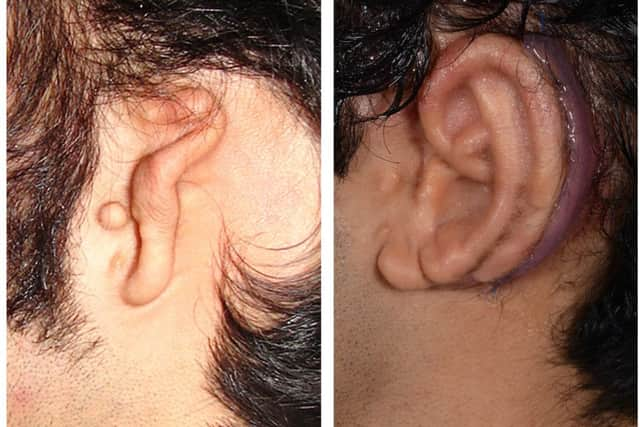Scottish surgeons ‘create’ new ear for student


Tausiq Shirazi was born with congenital microtia, meaning he had no ear or ear canal on one side of his head.
Surgeons in Edinburgh have carried out a series of operations to create an ear and fit an implant to let him hear on both sides for the first time.
Advertisement
Hide AdAdvertisement
Hide AdIt is hoped many more patients in Scotland could now benefit from the £24,000 surgery, which was carried out at the Spire Murrayfield Hospital.


Shirazi, a student at Newcastle University, said being able to hear on both sides had made a big difference to his life, just weeks after the final stage allowed him to start properly using his new ear.
In the latest operation, surgeon Ken Stewart was able to combine pioneering ear reconstruction techniques with the fitting of an implant called a Vibrant Soundbridge, which mechanically vibrates the bones in the middle ear.
“The implant has been used for a few years, but this is the first time in the UK it has been used in combination with an ear reconstruction,” he said.
“So you make an ear out of rib cartilage and carve it into an ear shape.
“When you place it on the patient it is flat against the head, so later you put a skin graft behind it to make it stick out.
“When we did this later procedure one of my colleagues, Alex Bennett, put the implant in.”
The Soundbridge is made up of a small audio processor, which is worn on the outside of the head, and an internal implant which vibrates the structures of the middle ear.
Advertisement
Hide AdAdvertisement
Hide AdThis vibration mimics the actions of sound waves moving through the ear canal to the inner ear, where they are passed to the brain and perceived as sound.
Shirazi spent a total of 13 hours in surgery over a period of a year, with the fitting of the external hearing aid taking place in December.
The biomedical sciences student said he had noticed a big improvement.
“Lectures have become a lot easier. I’d have to concentrate ridiculously hard just to have to process what I had heard and deal with that,” he said.
“But now it is a lot more natural. It’s a hearing aid so it is digital, not natural sound. But it is a very good substitute.”
Shirazi said having two ears made him feel “more complete”.
“Although they can’t achieve perfection Mr Stewart did a very good job. The two ears look quite similar and if you didn’t know I’d had the operations you’d probably just think it was a normal ear,” he said.
“A lot of people have told me that since the operation I have been speaking a lot more and am more confident generally.”
Shirazi’s operation was funded by his local NHS authority in Yorkshire.
Advertisement
Hide AdAdvertisement
Hide AdStewart said they were now optimistic that Scottish patients could benefit as Shirazi had. Around eight children a year in Scotland are born with microtia who could possibly benefit from the surgery.
“We have got an application with the health department at the moment and we’re optimistic that can be approved in the next month or so and then we can start offering it routinely to everybody,” he said.